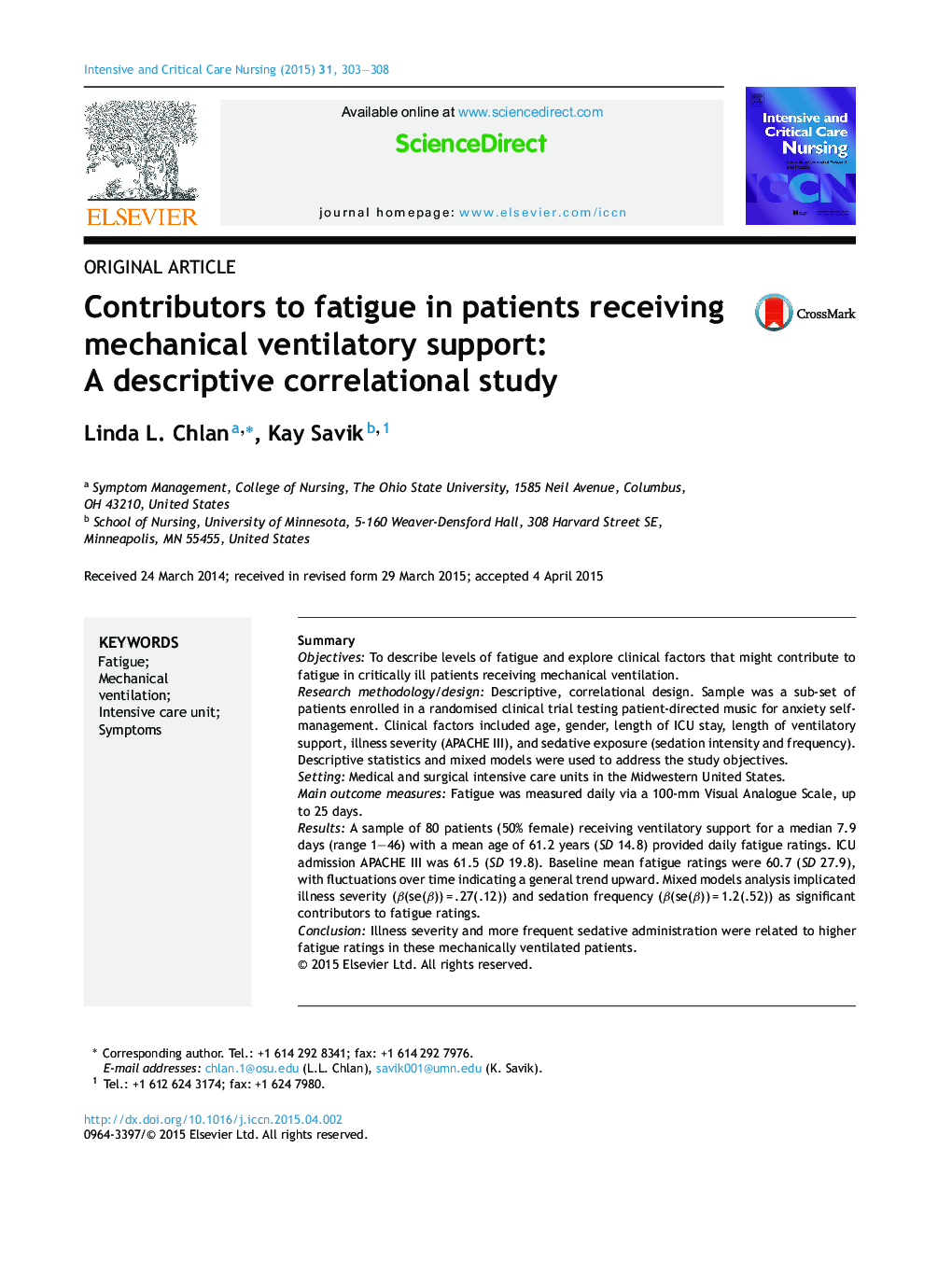| Article ID | Journal | Published Year | Pages | File Type |
|---|---|---|---|---|
| 2651929 | Intensive and Critical Care Nursing | 2015 | 6 Pages |
SummaryObjectivesTo describe levels of fatigue and explore clinical factors that might contribute to fatigue in critically ill patients receiving mechanical ventilation.Research methodology/designDescriptive, correlational design. Sample was a sub-set of patients enrolled in a randomised clinical trial testing patient-directed music for anxiety self-management. Clinical factors included age, gender, length of ICU stay, length of ventilatory support, illness severity (APACHE III), and sedative exposure (sedation intensity and frequency). Descriptive statistics and mixed models were used to address the study objectives.SettingMedical and surgical intensive care units in the Midwestern United States.Main outcome measuresFatigue was measured daily via a 100-mm Visual Analogue Scale, up to 25 days.ResultsA sample of 80 patients (50% female) receiving ventilatory support for a median 7.9 days (range 1–46) with a mean age of 61.2 years (SD 14.8) provided daily fatigue ratings. ICU admission APACHE III was 61.5 (SD 19.8). Baseline mean fatigue ratings were 60.7 (SD 27.9), with fluctuations over time indicating a general trend upward. Mixed models analysis implicated illness severity (β(se(β)) = .27(.12)) and sedation frequency (β(se(β)) = 1.2(.52)) as significant contributors to fatigue ratings.ConclusionIllness severity and more frequent sedative administration were related to higher fatigue ratings in these mechanically ventilated patients.
